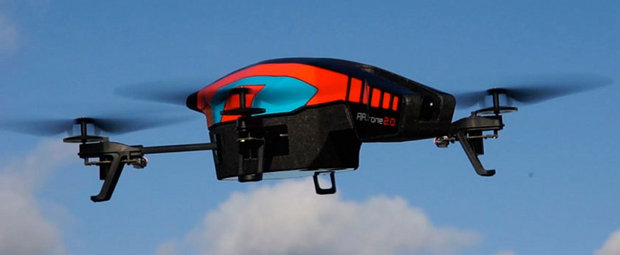The Embedded Linux Conference (ELC 2012) will take place on February 15 – 15, 2012 at Hotel Sofitel in San Francisco. ELC consists of 3 days of presentations, tutorials and sessions. There will be over 50 sessions during those 3 days. I’ll highlight a few sessions that I find particularly interesting. February 15 10:30 – 11: 30 – Profiling and Performance Measurement Techniques Using Linux Kernel Tools by Govindraj Raja, Software Engineer at Texas Instruments and Partha S Basak, Technical Manager at Texas Instruments. With ever growing features and functionality of Linux kernel, one needs methods to trace and profile parts of Linux kernel for various reasons like performance analysis, debugging etc. This presentation aims at providing an insight into few of these tools and their salient features. Supporting use case data as captured on open source OMAP4 pandaboard is also provided. 14:00 – 15:00 – The Yocto Project Overview […]
Xibo Digital Signage in Raspberry Pi Emulator (Step 1)
Xibo (pronounced eX-E-bO) is an open source, multi-display, multi-zone, fully scheduled digital signage client/server solution written in Python and dotNET. If you are not familiar with Xibo you can visit http://xibo.org.uk/ or/and read my introduction XIBO: An Open Source Digital Signage Server/Client. The Raspberry Pi is a low cost board based on Broadcom BCM2835 (ARM1176 Core) that should be available for sale at the end of January / beginning of February at http://www.raspberrypi.com. There are two versions of the board: Model A: 128 MB RAM and no Ethernet Model B: 256 MB RAM with 10/100 Mbit Ethernet BCM 2835 also features a Videocore GPU supporting OpenGL and 1080p30 video decoding that makes it ideal for multimedia applications such as digital signage players. The board support both HDMI and composite video output. You should also be able to connect a LCD via the DSI interface. If we can make Xibo run […]
Cross-compiling libavg 1.7 for ARM on Debian
libavg is a high-level development platform for media-centric applications using Python as scripting language and written in C++ and I’ve already written a post to cross-compile libavg 1.6 in Ubuntu (with linaro cross toolchain) and using Beagleboard qemu image. Since I’ve doing some preparation work to have software running on the Raspberry Pi and that the latter won’t support Ubuntu, I’ve had to cross-compile it again. This time, I’ve found a cleaner way to do the cross-compilation with dpkg-cross and xapt tools which can load the required armel package to the arm toolchain. Those tools really make life easy, as previously (a few years ago), I would have had to cross-compile all dependencies manually. Here are the steps I followed: Install Emdebian ARM Cross Toolchain and Tools in Debian. Download libavg 1.7 source code
|
1 |
wget http://www.libavg.de/raw-attachment/wiki/DownLoad/libavg-1.7.0.tar.gz |
Extract it
|
1 2 |
tar xzvf libavg-1.7.0.tar.gz cd libavg-1.7.0 |
Install the following armel development packages: sudo /usr/share/pdebuild-cross/xapt -a armel libpango1.0-dev libavformat-dev […]
Samsung Merges Bada OS With Tizen
Samsung has announced that it was merging Bada operating system with the new Tizen project (Linux OS with HTML5 API) at CES 2012. The work has already started, but Samsung did not provide any estimated completion date. If you have been developing Bada applications, the good news is that Tizen will support mobile applications written with bada’s SDK (software development kit) and previously published bada apps will be backwards compatible. Bada and Tizen developers will be given the same software tools (SDKs and APIs) so that if you know how to program in Bada, you will also be able to make Tizen apps. Samsung expects Tizen will be used in entry-level smartphone powered by single core processors as well as other devices targeted by Tizen such as tablets, smart TVs, netbooks and In-vehicle infotainment (IVI) devices. One or two Tizen devices should be released in 2012, and the company said […]
Ubuntu TV Works on OMAP4 Pandaboard
Ricardo Salveti, Software Engineer at Canonical, has written a blog post saying that Ubuntu TV now support full video hardware acceleration on the Pandaboard, TI OMAP 4 low cost development board. A demo of Ubuntu TV on the ARM platform with Ubuntu TV UI and 720p/1080p video playback can be seen in the video below. Pandaboard is the first ARM platform that can fully run Ubuntu TV. If you have a Pandaboard, you can try it out by installing the packages available at Linaro’s Overlay PPA. Qt and Qtmobility are not there yet (Patches are available at https://github.com/robclark/qtmobility-1.1.0), but he said they would be soon. The source code for Ubuntu TV is available at https://code.launchpad.net/~s-team/ubuntutv/trunk Jean-Luc Aufranc (CNXSoft)Jean-Luc started CNX Software in 2010 as a part-time endeavor, before quitting his job as a software engineering manager, and starting to write daily news, and reviews full time later in 2011. […]
Installing Emdebian ARM Cross Toolchain in Debian
I had previously installed Sourcery G++ ARM Linux toolchain in Ubuntu to build some software running in Debian, but I encountered some issues with some libraries (libavg) that use gethostbyname in static libraries without any easy way to make it dynamic. In that case, the library in the rootfs and cross-compiler must match. So I decided to install Debian Squeeze (6.0.3) and the corresponding cross-toolchain by Emdebian (short for Embedded Debian). First to use this toolchain, add the URL to get Emdebian packages to /etc/apt/sources.list: # # — Emdebian cross toolchains # deb http://www.emdebian.org/debian/ squeeze main Then install Emdebian public key: apt-get install emdebian-archive-keyring apt-get update If you don’t install the key, you’ll get the following error: W: GPG error: http://www.emdebian.org squeeze Release: The following signatures couldn’t be verified because the public key is not available: NO_PUBKEY B5B7720097BB3B58 Search and install packages for the architecture that you need, in this […]
Parrot AR.Drone 2.0: Linux based Augmented Reality Helicopter
Parrot announced a revised version of its Linux-based Parrot AR Drone “quadricopter” flying drone at CES 2012. The drone can now be operated with any Android device such as smartphones and tablets, whereas the previous version could only be controlled by an iPhone or iPad. Another new software features is the auto-pilot. The quadricopter body has been redesigned and reinforced, and fitted with a new 720p HD front-facing navigational camera which can record video and help the pilot navigating the drone. There is also a vertical camera that was present in the first generation. Here are the technical specializations of the Drone’s motherboard: 1 GHz 32-bit ARM Cortex A8 processor (Maybe OMAP3?) 800Mhz video DSP (TMS320DMC64x) 1GB DDR2 RAM USB 2.0 WiFi b/g/n . 3-axis accelerometer 3-axis gyroscope 3-axis magnetometer Pressure sensor for altitude measurement (altitude > 6m) Ultrasound sensor for ground altitude measurement (lower altitude) 60fps vertical QVGA camera […]
2012 Linux and Android Events by the Linux Foundation
The Linux Foundation has announced the list of events it organizes for 2012. Those are mainly technical, but there is also one event dealing with legal issues. Most of the venues are in the US, with 2 back-to-back events in Europe (Barcelona) and 1 in Asia (Japan). If you are one of the first 50 to register for any LinuxCon event, you can get a 35% discount, by registering with the code “12PM35”. List of Events: Android Builders Summit – February 13-14, 2012, Hotel Sofitel SF Bay, Redwood Shores, Calif. A technical summit for OEMs, their device manufacturers, integrators, custom builders, and the growing Android and Linux Kernel developer communities. Embedded Linux Conference – February 15-17, 2012, Hotel Sofitel SF Bay, Redwood Shores, Calif. The premier vendor-neutral technical conference for companies and developers using Linux in embedded products. Linux Storage, Filesystems and MM Summit – April 1-2, 2012, Hotel Nikko, […]






